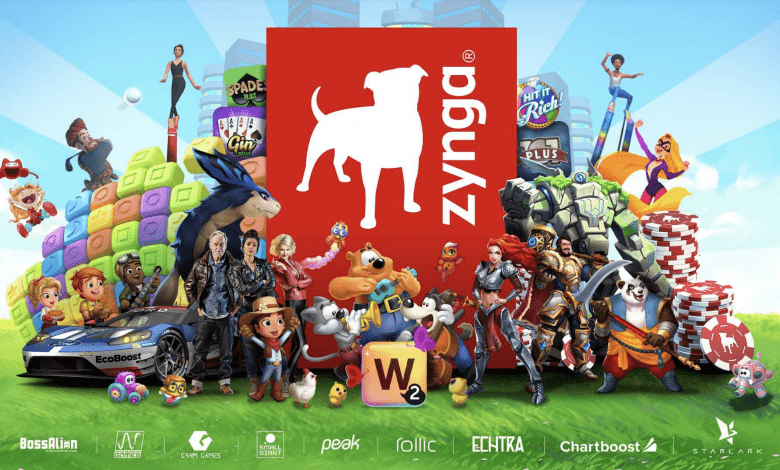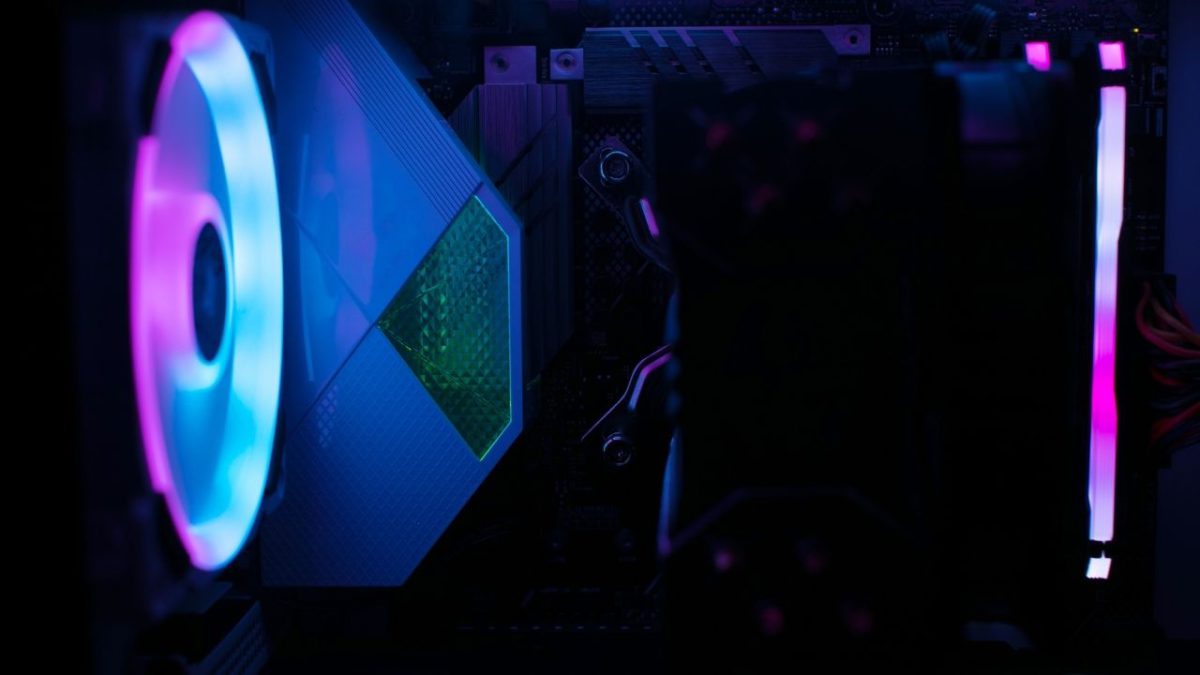Amazing Web3 Gaming: A Rocket Ship Poised for Takeoff In The 2024 Blockchain Boom
The gaming industry, a behemoth boasting billions of players worldwide, is on the cusp of a revolution. Web3 gaming, the marriage of blockchain technology and video games, is generating excitement with its potential to transform how we play, own, and earn within virtual worlds. Industry leaders are calling it a “rocket ship” ready to blast off, and 2024 might just be the year it reaches escape velocity.
Understanding the Web3 Difference
Traditional gaming confines players to ecosystems controlled by developers. In-game items, characters, and achievements are centralized assets, meaning players don’t truly own them. Web3 disrupts this model by leveraging blockchain technology. Blockchain acts as a decentralized ledger, securely recording ownership of digital assets, in this case, in-game items represented as NFTs (non-fungible tokens). This paradigm shift empowers players with true ownership of their virtual possessions. They can freely trade, sell, or use these NFT-based items, fostering a sense of investment and potentially generating real-world income.
The Play-to-Earn Revolution: Redefining Gaming in the Web3 Era
The gaming industry is on the cusp of a paradigm shift, fueled by the emergence of Web3 technologies like blockchain and cryptocurrencies. At the heart of this revolution lies the “play-to-earn” (P2E) model, fundamentally changing how players interact with games and potentially even earning a living from their playtime.
The Traditional Gaming Landscape: A One-Way Street
For decades, gamers have poured countless hours into virtual worlds, amassing in-game items, characters, and achievements. However, this digital wealth remained trapped within the confines of the specific game, offering no real-world value. Players essentially invested time and money with no tangible return.
The Rise of Play-to-Earn: Ownership and Earning Potential
The P2E model flips this dynamic on its head. By leveraging blockchain technology, P2E games empower players with true ownership of their in-game assets. These assets, often represented as NFTs (Non-Fungible Tokens), exist on a decentralized ledger, verifiable and tradable outside the game itself. This opens doors to a whole new way of playing:
- Earning Through Gameplay: Players can earn cryptocurrency or in-game tokens by completing quests, participating in battles, or achieving specific goals. These tokens can then be used within the game’s economy to purchase upgrades, participate in governance, or even breed new digital assets.
- Real-World Value: The earned tokens or NFTs can hold real-world value and be traded on cryptocurrency exchanges or dedicated marketplaces. This enables players to potentially generate income from their playtime, particularly for skilled players or those who invest strategically in the game’s economy.
Axie Infinity: A P2E Pioneer
Axie Infinity, a monster-battling game built on the Ethereum blockchain, stands as a prime example of the P2E revolution’s potential. Players collect, breed, and battle adorable creatures called Axies, represented by NFTs. Victories in these battles earn players Smooth Love Potion (SLP), an in-game token that can be used for breeding new Axies or cashed out for real-world currency.
Axie Infinity’s success story fueled a surge in P2E game development, attracting millions of players, particularly in developing economies where traditional job opportunities might be scarce. For these players, the ability to generate income through skilled gameplay presented a compelling opportunity.
Beyond the Hype: Challenges and Considerations
While the P2E model offers exciting possibilities, it’s crucial to acknowledge the challenges and considerations:
- Sustainability: The long-term viability of a P2E game heavily relies on a well-designed in-game economy. Inflation and an oversupply of tokens can quickly devalue player earnings.
- Pay-to-Win vs. Play-to-Earn: The delicate balance between rewarding skilled players and creating a fair playing field is vital. Some games can become “pay-to-win” scenarios, where players with significant upfront investments dominate, hindering accessibility for casual gamers.
- Volatility of Cryptocurrencies: The value of tokens earned through P2E games is directly linked to the often-volatile cryptocurrency market. Players need to be aware of this risk before investing time and money.
The Future of Play-to-Earn: A More Empowered Gaming Experience
Despite the challenges, the P2E model represents a significant step towards a more player-centric gaming experience. As the technology matures and developers prioritize sustainable economies and engaging gameplay, P2E has the potential to:
- Evolve Esports: P2E integration could revolutionize esports, allowing players to directly compete for valuable prizes and potentially forge professional careers within the P2E space.
- Community Ownership: DAOs (Decentralized Autonomous Organizations) could empower players to have a say in the game’s development and governance, fostering a stronger sense of community ownership.
- True Digital Ownership: P2E paves the way for true digital ownership of in-game assets, potentially opening doors to interoperable experiences where players can bring their prized possessions across different P2E games.
The play-to-earn revolution is still unfolding, and its ultimate impact on the gaming industry remains to be seen. However, one thing is certain: P2E has ignited a firestorm of innovation, challenging the status quo and pushing the boundaries of what a video game can be. As Web3 continues to evolve, P2E has the potential to redefine how we play, earn, and interact with virtual worlds.
Beyond Money: Ownership and Community – The Heart of Web3 Gaming’s Transformation
While the “play-to-earn” model grabs headlines, the true power of Web3 gaming extends far beyond mere financial gain. At its core, Web3 gaming fosters a paradigm shift in player ownership and fosters vibrant communities built around shared passions.
True Ownership: From Rented Assets to Prized Possessions
In traditional games, players invest time and resources into acquiring in-game items and characters. However, these assets are ultimately owned by the game developer, subject to change or even deletion at their whim. Web3 disrupts this model by introducing true digital ownership through NFTs.
- Power to the Players: Players own their in-game assets as NFTs, giving them complete control over what they do with them. They can use them within the game, trade them on marketplaces, or even lend them to other players. This empowers players and fosters a sense of true investment in the virtual world.
- Building Value: Ownership unlocks new avenues for players to build value within the game. They can invest strategically in rare NFTs, breed or craft new assets, and participate in the game’s economy to see their possessions appreciate in value.
- Interoperability: A Unified Metaverse: Imagine a future where your prized sword from game A can be wielded in game B. Blockchain technology paves the way for interoperability, allowing players to take their owned assets across different Web3 games, fostering a more unified and expansive metaverse.
Community: United by Shared Passions
Web3 gaming fosters a unique sense of community unlike anything seen before. Here’s how:
- DAOs: Shaping the Future: Decentralized Autonomous Organizations (DAOs) empower players to collectively govern the game’s development. Through token ownership, players can vote on proposals, shape in-game rules, and contribute to the game’s future. This fosters a sense of shared ownership and responsibility within the community.
- Play-and-Earn Guilds: The rise of play-to-earn guilds creates a collaborative environment, particularly in developing economies. Guilds provide resources and training to new players, allowing them to compete at a higher level and earn a living. This fosters a strong sense of camaraderie and support within the community.
- Passion Over Profit: While earning potential exists, Web3 gaming attracts players who are genuinely passionate about the game itself. The shared love for the game’s lore, mechanics, and community becomes the driving force, fostering a more organic and meaningful sense of connection.
The Future of Web3 Gaming: A More Fulfilling Experience
The ownership and community aspects of Web3 gaming have the potential to revolutionize the gaming landscape:
- Meaningful Investment: Players are no longer simply spending money on fleeting experiences; they are investing in assets they truly own and communities they care about. This creates a more sustainable and rewarding gameplay experience.
- Evolving Esports: Community-driven governance and shared ownership models could lead to a new era of esports, where players and fans have a stake in the success of their favorite teams and leagues.
- A Thriving Digital Economy: Web3 gaming fosters a vibrant digital economy where players can create, trade, and own valuable assets. This opens doors for new forms of creative expression and economic participation within the gaming world.
The true potential of Web3 gaming lies not just in the “play-to-earn” aspect, but in the empowerment it grants players. By fostering ownership, fostering community, and creating a sense of shared purpose, Web3 gaming has the potential to create a more fulfilling and engaging gaming experience for everyone involved.
Challenges and Considerations: Navigating the Uncharted Waters of Web3 Gaming
The exciting world of Web3 gaming, brimming with ownership, community, and potential earnings, also comes with its fair share of challenges and considerations. Here’s a closer look at some of the hurdles that need to be addressed:
Technical Hurdles:
- Scalability: Blockchain technology, while revolutionary, can struggle with scalability, particularly when dealing with a large player base. Transactions can become slow and expensive, hindering the smooth gameplay experience. Developers need to find innovative solutions like Layer 2 scaling to ensure a seamless experience for all.
- Security Concerns: Smart contracts, the backbone of P2E games, are susceptible to hacks and exploits. This can lead to loss of player assets and erode trust in the ecosystem. Robust security audits and ongoing maintenance are crucial to mitigate these risks.
- User-friendliness: Blockchain technology and cryptocurrency can be complex for newcomers. Simplifying the user experience and offering educational resources are essential for broader adoption of Web3 gaming.
Economic Sustainability:
- Maintaining Balance: The play-to-earn model hinges on a well-designed in-game economy. Finding the right balance between rewarding players and ensuring the game’s long-term sustainability is crucial. Inflation and an oversupply of tokens can quickly devalue player earnings and destroy the game’s economy.
- Pay-to-Win vs. Play-to-Earn: If games become overly reliant on upfront investments to be competitive, the “play-to-earn” aspect can become a facade. Developers need to strike a balance between rewarding skilled players and ensuring accessibility for casual gamers.
Regulatory Uncertainty:
- Uncharted Territory: The regulatory landscape surrounding cryptocurrencies and NFTs is still evolving. This uncertainty can create challenges for developers and hinder mainstream adoption. Clear regulations are needed to provide a framework for responsible development and protect players.
Addressing these challenges is crucial for the long-term success of Web3 gaming. Developers who prioritize responsible practices, create sustainable economies, and focus on fostering a welcoming community will be well-positioned to navigate the uncharted waters and usher in a new era of engaging and rewarding gaming experiences.
Also, read –Top 12 Steps To Follow To Build Your Own Game On Web3 Gaming Platform
Industry Experts: Ready for Lift-off
Industry leaders are optimistic about overcoming these hurdles. They point to a growing number of high-quality Web3 games being developed, with engaging storylines and innovative gameplay that goes beyond the financial aspects. “[We feel] that if blockchain technology is really going to hit the mainstream, it’s number one going to be through gaming,” says Toby Batton, CEO of Web3 game studio Ex Populus. “[Gaming] has a massive audience of billions of players worldwide, and the use case of blockchain technology fits so perfectly with games.” Rebecca Liao, founder of Saga, a blockchain built for game developers, agrees, emphasizing the need for frictionless gameplay that appeals to both crypto enthusiasts and traditional gamers.
2024: A Pivotal Year?
With the gaming industry embracing innovation and a growing number of players curious about the potential of Web3, 2024 could be a pivotal year. As development teams address accessibility concerns and create truly engaging experiences, Web3 gaming has the potential to attract a wider audience. The “rocket ship” metaphor might just become reality, propelling us towards a future where gaming transcends entertainment and becomes a platform for ownership, community, and potential real-world rewards.
The Future of Play
The future of Web3 gaming is brimming with possibilities. Imagine interoperable virtual worlds where players seamlessly move their NFT-based items across different games. Picture vibrant in-game economies fueled by player participation and ownership. Web3 gaming has the potential to redefine the way we interact with video games, fostering a more democratic and rewarding experience for players and developers alike. As technology evolves and the industry matures, 2024 might be just the beginning of a thrilling ride in the Web3 gaming universe.
Stay informed with daily updates from Blockchain Magazine on Google News. Click here to follow us and mark as favorite: [Blockchain Magazine on Google News].
Get Blockchain Insights In Inbox
Stay ahead of the curve with expert analysis and market updates.
latest from tech
Disclaimer: Any post shared by a third-party agency are sponsored and Blockchain Magazine has no views on any such posts. The views and opinions expressed in this post are those of the clients and do not necessarily reflect the official policy or position of Blockchain Magazine. The information provided in this post is for informational purposes only and should not be considered as financial, investment, or professional advice. Blockchain Magazine does not endorse or promote any specific products, services, or companies mentioned in this posts. Readers are encouraged to conduct their own research and consult with a qualified professional before making any financial decisions. The featured image used is just a creative depiction of the title and it does not intend to hurt sentiments of any person or institution. If it hurts anyone sentiments, please do not hesitate to reach out to Blockchain Magazine.

 Bitcoin
Bitcoin  Ethereum
Ethereum  XRP
XRP  Tether
Tether  Solana
Solana  USDC
USDC  Dogecoin
Dogecoin  Cardano
Cardano  Lido Staked Ether
Lido Staked Ether  TRON
TRON  Wrapped Bitcoin
Wrapped Bitcoin  Chainlink
Chainlink  Wrapped stETH
Wrapped stETH  Sui
Sui  Avalanche
Avalanche  Stellar
Stellar  Hedera
Hedera  Toncoin
Toncoin  Shiba Inu
Shiba Inu  LEO Token
LEO Token  Hyperliquid
Hyperliquid  Bitget Token
Bitget Token  Litecoin
Litecoin  WETH
WETH  USDS
USDS  Polkadot
Polkadot  Bitcoin Cash
Bitcoin Cash  Ethena USDe
Ethena USDe  MANTRA
MANTRA  Wrapped eETH
Wrapped eETH  Uniswap
Uniswap  Pepe
Pepe  Ondo
Ondo  Monero
Monero  Aave
Aave  WhiteBIT Coin
WhiteBIT Coin  NEAR Protocol
NEAR Protocol  Mantle
Mantle  Official Trump
Official Trump  Aptos
Aptos  Dai
Dai  Internet Computer
Internet Computer  Ethereum Classic
Ethereum Classic  Bittensor
Bittensor  Cronos
Cronos  OKB
OKB  POL (ex-MATIC)
POL (ex-MATIC)  Gate
Gate 



